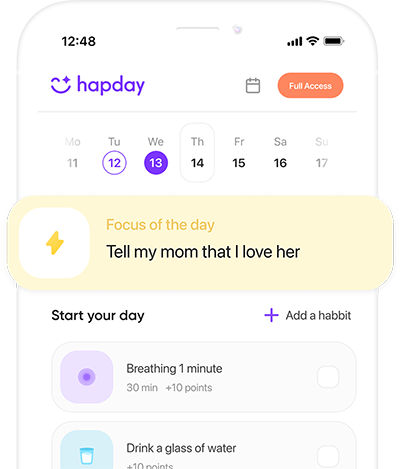Table of Contents
- Understanding Childhood Trauma
- The Impact of Childhood Trauma
- Building Emotional Resilience
- Mindfulness and Meditation
- Cognitive Behavioral Therapy (CBT)
- Social Support Networks
- Physical Activity
- Trauma-Informed Care
- Challenges in Building Resilience
- The Role of Self-Compassion
- Conclusion
- References
Understanding Childhood Trauma
So, what’s the deal with childhood trauma? It refers to those gut-wrenching experiences that weigh heavily on a kid, potentially leaving behind a trail of long-lasting psychological scuff marks. We’re talking about things like abuse, neglect, or even witnessing violence—sadly, there’s no shortage of examples. The CDC and Kaiser Permanente’s ACE study (a landmark one, by the way) found a striking link between early trauma and future health problems, both mental and physical.
The Impact of Childhood Trauma
How does trauma show up later? Well, a blast-from-the-past study from JAMA Psychiatry in 2016 indicated that people who’ve faced childhood trauma are more at risk for anxiety, depression, and PTSD. Basically, it can remap your brain—messing with the areas that help you manage stress and emotions. This just screams for intervention, doesn’t it?
Building Emotional Resilience
Emotional resilience—sounds fancy, huh? In essence, it’s your ability to roll with life’s punches. For trauma survivors, it’s more than crucial; it’s life-changing. Here are a few strategies, backed by research, to beef up that resilience:
1. Mindfulness and Meditation
Mindfulness is your ally here. Studies suggest that mindfulness meditation reduces anxiety by keeping you anchored in the now. Picture this: a calm mind acting like your very own emotional buffer. Practicing regularly can help you reign in those knee-jerk emotional reactions.
2. Cognitive Behavioral Therapy (CBT)
CBT isn’t just another buzzword. It’s a method that zooms in on reshaping those pesky negative thoughts. According to Psychotherapy and Psychosomatics, CBT is dynamite for treating trauma symptoms. It offers tools to tackle harmful mind loops, essentially handing you the reins over your own emotional world.
3. Social Support Networks
Never underestimate the power of a solid support system. Harvard Health reports that being surrounded by a caring circle can seriously lift your mental health. Friends, family, or a trusted group offer a lifeline of encouragement and understanding—priceless when you’re navigating emotional storms.
4. Physical Activity
Exercise is nature’s happy pill. Seriously, it ups endorphins, providing mood-enhancing effects. According to findings in Psychology of Sport and Exercise, folks who stay active tend to report higher resilience and lower levels of stress and anxiety. Makes you wanna lace up those sneakers, doesn’t it?
5. Trauma-Informed Care
Seeking professionals who specialize in trauma-informed care can be a game-changer. SAMHSA guidelines emphasize recognizing and addressing signs of trauma in all areas of care—creating a safe haven for healing to take place.
Challenges in Building Resilience
But let’s be real—building resilience is no walk in the park. Barriers like limited access to mental health resources or the stigma surrounding mental health issues complicate things. Tackling these challenges often requires a collective voice advocating for improved mental health solutions and breaking down stigmas.
The Role of Self-Compassion
I’m a big fan of self-compassion. It’s all about treating yourself with the kindness you’d offer a friend. Kristin Neff’s work suggests it fosters resilience by cutting back on harsh self-criticism. Makes sense, right?
Conclusion
Unmasking the hidden figures of childhood trauma and getting a grip on emotional resilience is a major part of healing. Building this resilience? It’s like crafting a suit of armor from mindfulness, therapy, social connections, exercise, and expert care. Yes, hurdles exist, but the journey is as empowering as it is transformative. Ready to take that first step towards resilience? Download the Hapday app for guidance. Start your journey now.
References
- National Child Traumatic Stress Network. (n.d.). Understanding Child Trauma. Retrieved from https://www.nctsn.org
- Centers for Disease Control and Prevention. (n.d.). Adverse Childhood Experiences (ACE) Study. Retrieved from https://www.cdc.gov/violenceprevention/aces/index.html
- JAMA Psychiatry. (2016). Association of Childhood Adversities and PTSD With Risk of Early Death. Retrieved from https://jamanetwork.com/journals/jamapsychiatry/fullarticle/2491946
- Journal of Clinical Psychology. (n.d.). Mindfulness-Based Stress Reduction and Health Benefits. Retrieved from https://onlinelibrary.wiley.com/journal/10974679
- Psychotherapy and Psychosomatics. (n.d.). CBT for Trauma-Related Disorders. Retrieved from https://www.karger.com/Journal/Home/224285
- Harvard Health Publishing. (n.d.). The Health Benefits of Strong Relationships. Retrieved from https://www.health.harvard.edu
- Psychology of Sport and Exercise. (n.d.). Physical Activity and Resilience. Retrieved from https://www.journals.elsevier.com/psychology-of-sport-and-exercise
- Substance Abuse and Mental Health Services Administration (SAMHSA). (n.d.). Trauma-Informed Care. Retrieved from https://www.samhsa.gov

